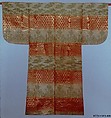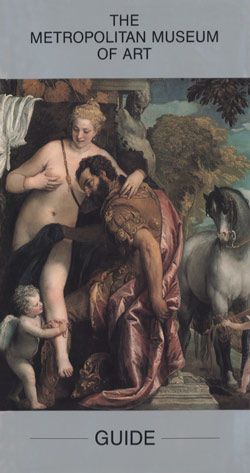Noh Robe (Karaori) with Pattern of Bamboo and Young Pines on Bands of Red and White
Not on view
This resplendent Noh costume presents a wealth of auspicious symbolism on a background of horizontal bands. Green and gold pine and bamboo flourish on the wintry white bands, and continuous golden patterns of hexagons and interlocking circles grace the red. Pine and bamboo, also seen on the smaller robe shown in this case, traditionally represent winter and a joyous new year. The hexagonal pattern is associated with longevity because of its similarity to a turtle's shell, and the design of interlocking circles, termed shippō (literally, "seven treasures"), lends an aura of prosperity. The resist-dyeing of the warps, reserved in white and dyed in red, imparts a pleasing softness to the boundaries between the bands.
Due to rights restrictions, this image cannot be enlarged, viewed at full screen, or downloaded.
This artwork is meant to be viewed from right to left. Scroll left to view more.






